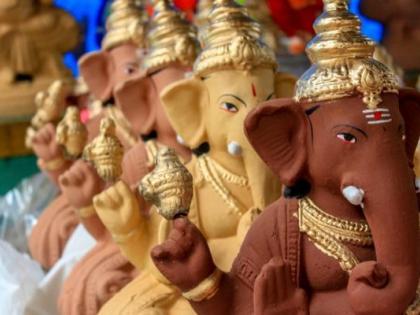Ganesh Chaturthi 2023: How Ganeshotsav became a national festival
By Lokmat English Desk | Updated: September 6, 2023 17:37 IST2023-09-06T17:36:04+5:302023-09-06T17:37:14+5:30
Ganesh Chaturthi is celebrated to mark the birth of the Lord of Wisdom. But the history of these celebrations ...

Ganesh Chaturthi 2023: How Ganeshotsav became a national festival
Ganesh Chaturthi is celebrated to mark the birth of the Lord of Wisdom. But the history of these celebrations dates back to the era of Chhatrapati Shivaji, the founder of the Maratha Empire. Some historians believe that Shivaji Maharaj first started the celebration of Ganesh Chaturthi in great fervour since Lord Ganesh was the Kuldevata (family God) of the Peshwas. The practise continued till the fall of the Peshwas.Tilak noticed that Lord Ganesh was considered “the God for everyman”, that Ganesh was worshipped by the members belonging to the upper castes and lower castes alike, leaders and followers alike. He popularised Ganesh Chaturthi as a national festival ‘to bridge the gap between the Brahmins and the non-Brahmins.’ In 1893, he set up the first and the oldest mandal— Keshavi Naik Chawl Sarvajanik Ganeshotsav Mandal at Girgaum.
The year is famous for the Indian Rebellion of 1857 which is also referred to as the Sepoy Mutiny, India's First War of Independence, Revolt of 1857 among many other names. It was a rebellion that posed serious threat to the rule of the East India Company. Bal Gangadhar Tilak was one of the prominent leaders of the Great Rebellion. The leader saw the need to unite Indians more and realised nothing can bond people more than a common idol, equally worshipped by all. Tilak noticed that Lord Ganesh was considered "the God for everyman", that Ganesh was worshipped by the members belonging to the upper castes and lower castes alike, leaders and followers alike. He popularised Ganesh Chaturthi as a national festival 'to bridge the gap between the Brahmins and the non-Brahmins.'
In 1893, Tilak organised Ganesh Utsav as a social and religious function. It was him who put large hoarding with images of Lord Ganesh in pavilions and the man behind the tradition of immersion of huge Ganesh statues on the tenth day of the festival. The festival served as a meeting place for common people of all castes and communities at a time when public social, political gatherings were banned by the British.The festival not only united Muslims and Hindus but brought all castes together.What the community festivals created was a consciousness among the people from all walks of life, religions and castes. This alarmed British authorities and they recognized that Tilak's stature among the leaders of India was growing rapidly and it was important to clip his wings.Thus Ganesh utsav became a symbol of unity among people across the sections.
Open in app